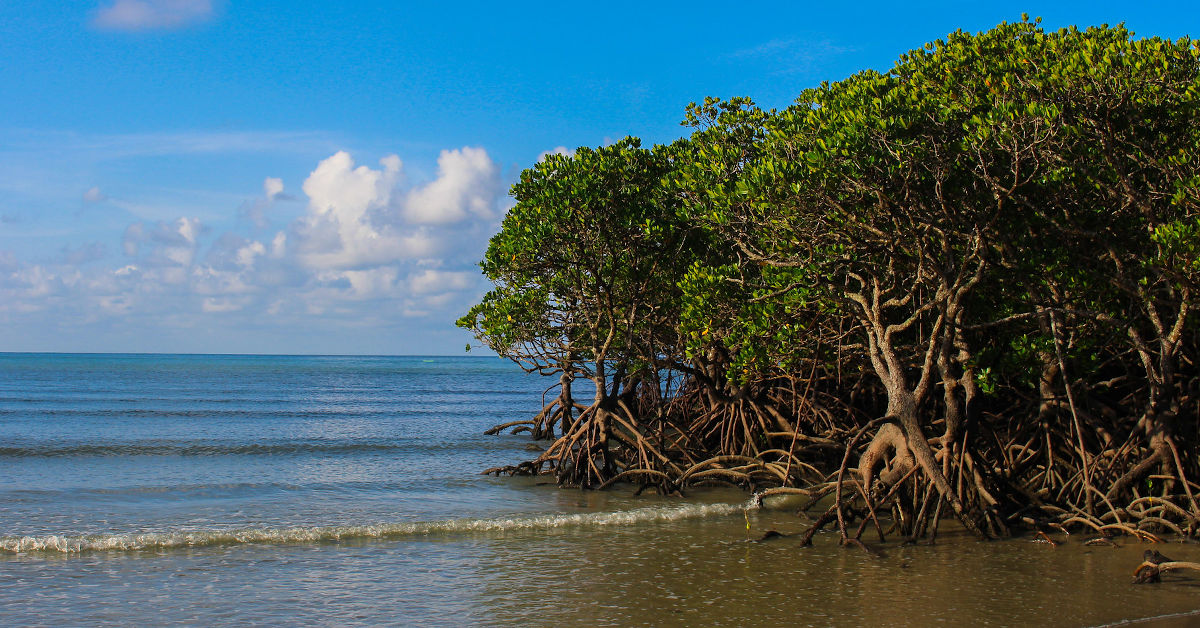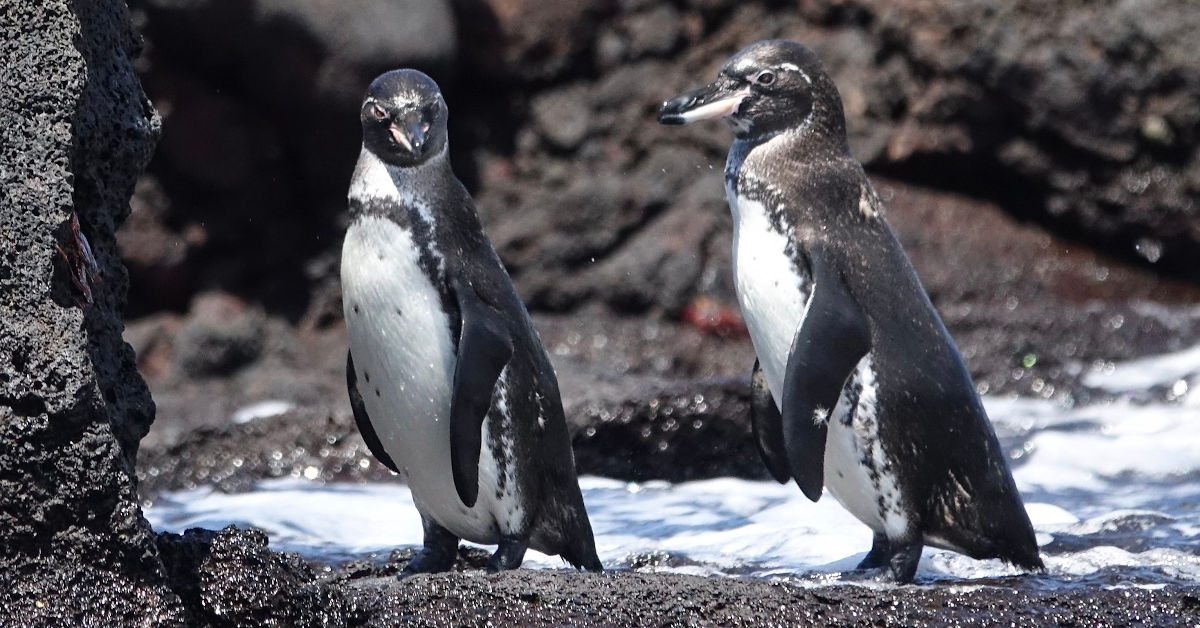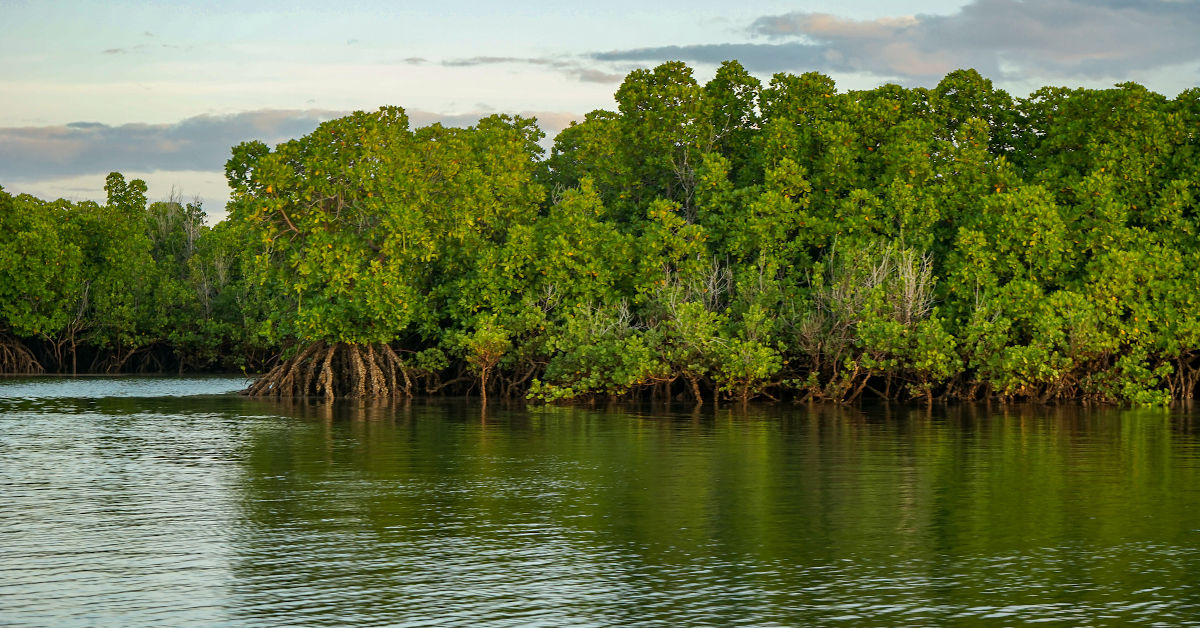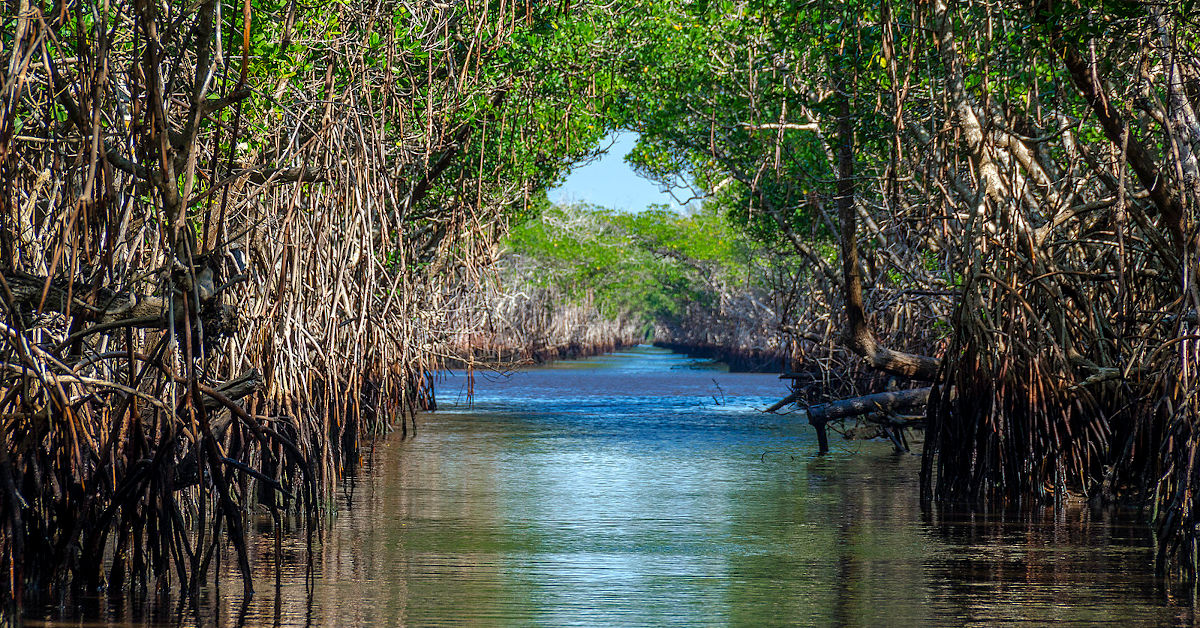As the risks facing our natural world increase, environmentalists are always looking for new ways to tackle issues such as deforestation, climate change and carbon emissions. Whilst many organisations such as The Word Forest Organisation are busy rallying volunteers to bang the drum for the environment, there is perhaps an unsung hero patiently waiting on the side-lines – the mangrove tree. Planting mangroves has been proven to help with environmental issues and is perhaps something more of us should get on board with, moving forward.
There are about 80 different species of mangrove. Unlike other varieties, they thrive in areas with low-oxygen soil, where slow moving waters allow sediments to accumulate. These forests only grow in tropical and subtropical latitudes near to the equator because, unlike the sturdy oak and ash trees we are familiar with in the UK, mangroves are unable to tolerate freezing weather conditions. (1) They are most commonly found along the Atlantic coast, from Florida all the way down to Argentina and on both the western and eastern coasts of Africa. This ability to survive where most tree species would struggle is what makes these trees all the more unique.

There are many benefits to planting mangroves. Not only are they relatively easy to plant and can withstand challenging soil conditions, but they also play a part in protecting some of nature’s most vulnerable species. Due to the high concentration of nutrients which flow in and out of mangrove lagoons with the tides, these forests provide vital breeding and nursery grounds for an array of animals such as young sharks, penguins, turtles, fish and invertebrates. (2) Conserving this landscape is crucial to safeguarding that circle of life. Not only do they help maintain a diverse population of thriving breeds, but mangroves protect critically endangered species such as the Galapagos penguin, the only penguin found north of the equator. This bird is listed as endangered on the IUCN Red List of Threatened Species (3,4) with a population that currently stands at between 3,000 to 8,000 individuals. Unfortunately, there are only around 800 breeding pairs left in the world and this is declining rapidly. Arguably, without the protection provided by mangrove forests, we would have lost these penguins a long time ago, so boosting the rate of mangrove planting in the region is crucial if we want to preserve this species.

Mangrove forests also have a phenomenal capacity for carbon sequestration. This is the process by which carbon dioxide is removed from the atmosphere and held in soil or liquid form, which helps to mitigate global warming. Studies have shown that the coastal ecosystems of mangroves, tidal marshes and seagrass meadows contain large deposits of sequestered carbon which, in turn, plays a huge role in tackling climate change. However, this process is only achievable if the ecosystems remain untouched and undamaged. If they are degraded or damaged (either directly or indirectly by human activity), the carbon sink capacity can be adversely affected and possibly even lost for good. If this happens, the carbon stored in the soil will be released, resulting in carbon dioxide emissions. (11, 12) Ultimately, protecting these mangrove forests and increasing the rate at which they’re being planted is key if we want to eradicate climate change before it’s too late.
However, there are many threats to the trees themselves which jeopardize this. These include (but are not limited to) shrimp farming, the impact of tourism, agriculture and coastal development. (5) Establishing a way to mitigate these factors and promote a healthy relationship which supports the economy just as much as the natural environment is important in creating a workable natural world. Like most tree restorations, there are many factors at hand that need to be carefully considered. While mangrove populations have been successfully restored in countries such as India (6), they require a very specific climate; something we must take into careful consideration. After all, what good would come out of planting these trees in unsuitable locations and subsequently watching them perish? Being respectful that mangroves require an area where fresh water mixes with sea water and where the soil is dense and rocky promotes a responsible approach towards this restoration. (7,8) Educating communities about environmental responsibility, which trees suit which climate and where they should be planted will ensure that these forests are restored successfully for the benefit of the planet and all its residents.
There are nine species of mangrove in Kenya and 59% of the forests are in Lamu County. Other mangrove forests can be found in coastal towns like Kifili. The existence of this species in Kenya means that the climate can successfully support these trees. (9) In turn, this could have a very positive impact on the natural landscape if we can just get the message out there and really promote the fact that tree planting is of utmost importance if we want to have a natural world in the years to come. (10)

Supporting Kenyan communities to plant trees is at the heart of what The Word Forest Organisation does and, while not on the cards yet, planting and sustaining a healthy mangrove colony is something that we believe would be of great benefit in Kenya. It certainly holds potential and may be one of the ways that we consider expanding our work there in the future. It goes without saying that carefully evaluating the advantages and disadvantages of mangrove trees and their impact is crucial. However, the fact that there are already successful mangrove colonies in Kenya and also room for development is a huge leap in the right direction. It just goes to show, trees really are the key.Click here to watch our short film #TreesAreTheKey narrated by Kate Winslet.
References
1: https://floridakeys.noaa.gov/plants/mangroves.html
2: http://www.mbgnet.net/salt/sandy/mangroves.htm
3: https://www.galapagos.org/conservation/our-work/ecosystem-restoration/increasing-the-galapagos-penguin-population/
4: https://marinebio.org/species/galapagos-penguins/spheniscus-mendiculus/
5: https://www.amnh.org/explore/videos/biodiversity/mangroves-the-roots-of-the-sea/mangrove-threats-and-solutions
6: https://en.wikipedia.org/wiki/Mangrove
7: http://www.fao.org/3/ai387e/ai387e06.htm
8: https://www.wetlands.org/publications/mangrove-restoration-to-plant-or-not-to-plant/
9: http://www.kenyaforestservice.org/documents/National_Mangrove_Ecosystem_Management_Plan_Final_170628.pdf
10: https://www.nation.co.ke/lifestyle/health/conservation-of-mangroves/1954202-4681946-2iv7er/
11: https://www.iucn.org/resources/issues-briefs/blue-carbon
12: https://en.wikipedia.org/wiki/Carbon_sequestration
Anna Parkinson and The Team





